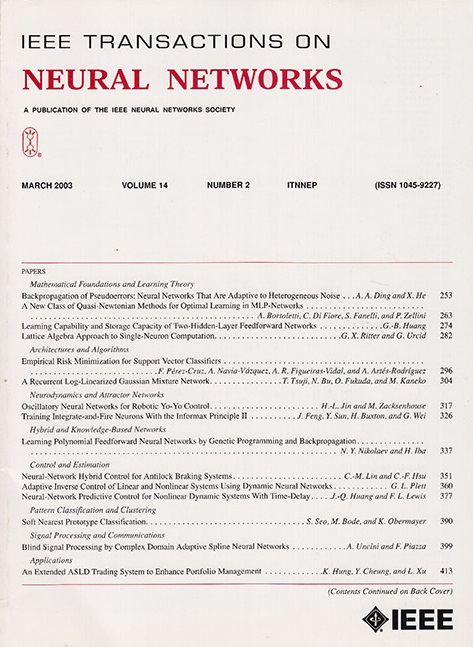An Adaptive Neighborhood-Resonated Graph Convolution Network for Undirected Weighted Graph Representation.
IF 8.9
1区 计算机科学
Q1 COMPUTER SCIENCE, ARTIFICIAL INTELLIGENCE
IEEE transactions on neural networks and learning systems
Pub Date : 2025-07-22
DOI:10.1109/tnnls.2025.3589224
引用次数: 0
Abstract
An undirected weighted graph (UWG) is the fundamental data representation in various real applications. A graph convolution network is frequently utilized for representation learning to a UWG. Nevertheless, existing graph convolutional networks (GCNs) only consider a node's neighborhood during the embedding propagation, which regrettably decreases its representation learning capability due to the information loss in the modeling phase. Motivated by this discovery, this study proposes an adaptive neighborhood-resonated graph convolution network (ANR-GCN) with the following ideas: 1) establishing the weighted embedding propagation with the consideration of link weights in a UWG, thereby incorporating the interaction strength of each node pair into the ANR-GCN model; 2) building the neighborhood-regularization (NR) to make each node resonate with its neighborhoods, thus reinforcing the informative neighborhood information for improving the ANR-GCN's representation capability to the complex topology of the target UWG; and 3)diversifying the NR effects following the attention principle for guaranteeing the ANR-GCN's learning capacity. The proposed ANR-GCN's representation learning ability to a UWG is theoretically guaranteed from the perspectives of bounded generalization error and uniform stability. Extensive experiments on four UWG datasets illustrate that the proposed ANR-GCN significantly outperforms state-of-the-art GCNs in missing edge detection in a UWG, which evidently demonstrates its superior performance.无向加权图表示的自适应邻域共振图卷积网络。
无向加权图(UWG)是各种实际应用中的基本数据表示形式。图卷积网络经常被用于UWG的表示学习。然而,现有的图卷积网络(GCNs)在嵌入传播过程中只考虑节点的邻域,由于建模阶段的信息丢失,严重降低了其表示学习能力。基于这一发现,本研究提出了一种自适应邻域共振图卷积网络(ANR-GCN),其思路如下:1)在UWG中考虑链路权重建立加权嵌入传播,从而将各节点对的交互强度纳入ANR-GCN模型;2)构建邻域正则化(NR),使每个节点与其邻域产生共振,从而增强邻域信息的信息量,提高ANR-GCN对目标UWG复杂拓扑的表示能力;3)遵循注意原则使NR效应多样化,以保证ANR-GCN的学习能力。从有界泛化误差和均匀稳定性的角度,理论上保证了所提出的ANR-GCN对UWG的表示学习能力。在四个UWG数据集上的大量实验表明,所提出的ANR-GCN在UWG中缺失边缘检测方面明显优于最先进的gcn,这明显证明了其优越的性能。
本文章由计算机程序翻译,如有差异,请以英文原文为准。
求助全文
约1分钟内获得全文
求助全文
来源期刊

IEEE transactions on neural networks and learning systems
COMPUTER SCIENCE, ARTIFICIAL INTELLIGENCE-COMPUTER SCIENCE, HARDWARE & ARCHITECTURE
CiteScore
23.80
自引率
9.60%
发文量
2102
审稿时长
3-8 weeks
期刊介绍:
The focus of IEEE Transactions on Neural Networks and Learning Systems is to present scholarly articles discussing the theory, design, and applications of neural networks as well as other learning systems. The journal primarily highlights technical and scientific research in this domain.
 求助内容:
求助内容: 应助结果提醒方式:
应助结果提醒方式:


